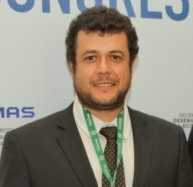Welcome to the Vancouver Kimberlite Cluster!
The Cluster is a UBC-SRK seminar series, to share ideas and stories from diamond exploration, kimberlite geology, mantle petrology and related topics. We meet every one-to-two months for a talk, and a trip to the nearest pub if we meet in person downtown. We aim to gather the many people working on kimberlites, the cratonic mantle and diamonds - everyone is welcome.
The talk schedule for this and past seasons are below. If you want to subscribe to the distribution list, use this link
2025/2026 Season:
| Date | Speaker | Title | Abstract |
October 29, 2025 12 pm (Pacific Time) |  Luiz Bizzi, Co-Chair Paulo Donatti, Exploration Manager, Lipari Diamond Mines  | Tchitengo Project, Angola: Overview of the advanced exploration stage at Tchiuzo kimberlite
| The first reported diamond production in Angola was in 1912 when diamonds were found in alluvial gravels along the Cuango and Chicapa rivers in the Lunda provinces of northeastern Angola. Some 113 years after the discovery, Angola became one of the largest diamond producers in the world, including secondary and primary sources within cratonic areas of the country.The Tchitengo Concession was acquired by Lipari Mining in 2019 via a public tender. The Tchiuzo Kimberlite is the largest and most advanced kimberlite prospect amongst the 30 kimberlite intrusives in the concession. It is situated approximately 19km from Catoca and 35km from Luele, on the western edge of the Archean Kasai Craton. Tchiuzo kimberlite with its emplacement age of 121 Ma is an irregular ellipsoidal-shaped pipe 540 by 220 m2. The current erosion level of the Tchiuzo pipe exposed the shallow diatreme zone of the kimberlite. In drillcore samples, Tchiuzo kimberlite is classified as volcanoclastic, highly serpentinised, moderately sorted, moderately crystal-rich, matrix supported olivine kimberlite. Ilmenite xenocrysts with subordinate amounts of garnet and spinel are also present. Based on drilling information up to 400mbs, a geological and block models were generated resulting in a a total mineral resource of 54.75M tonnes of Indicated and Inferred Resources at an average grade of 42.3cpht, totaling 23M carats in dominantly diatreme-facies rock types: Tuffisitic kimberlite and Tuffisitic kimberlite Breccia. |
December 3, 2025 12 PM (Pacific Time) |  Howard Coopersmith LLC | Lessons learned from a career in diamond deposits | One strives to learn lessons from life, and this is equally so in one’s career. Having had the opportunity to spend my career in such a diverse field as geology, I specialized in a single commodity – diamond. Hence, I hope that I have learned something that has been valuable to my work, and to those whom I have worked with. As an economic geologist, being valuable equates to money, i.e. profitable mining projects. My goal has been to search for and discover prospects that have the potential to become successful mines. Once a prospect shows the potential, in most or all attributes, to be profitably developed and mined these criteria must be continuously evaluated and re-evaluated with this goal in mind. If the prospect fails these tests we must understand why and move on. If it passes, we must understand why (again!) and seek to optimize for even better performance. I will discuss tidbits of what makes a mine successful, and why mines fail, specific to diamond projects and using the tools of an economic geologist. |
22 January, 2026 12 PM (Pacific Time) | Dr. Kira Musiyachenko, UBC | Lu-Hf garnet geochronometry: A unique clock for mantle metasomatism | Abstract |
March , 2026 12 pm (Pacific Time) |
Speaker |
| Abstract |
Past meetings 2024/2025 Season
Past meetings 2023/2024 Season
Past meetings 2022/2023 Season
Past meetings 2021/2022 Season
Past meetings 2020/2021 Season
Past meetings 2019/2020 Season
Past meetings 2018/2019 Season
Past meetings 2017/2018 Season
Past meetings 2016/2017 Season















